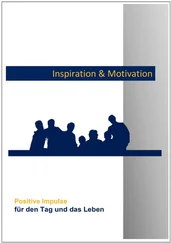More broadly, empathy may counteract a particularly subtle and insidious form of aggression – blaming the victims of injustice. In his classic work on the just‐world hypothesis, Melvin Lerner (1980) found that research participants were likely to derogate a person whom they perceived to be the innocent victim of suffering. This derogation presumably served to maintain participants’ belief that people get what they deserve and deserve what they get. Protecting our belief in a just world in this way can lead to what William Ryan (1971) called blaming the victim . Ryan suggested that we’re likely to react to the victims of unjust discrimination and oppression in our society – racial minorities, the poor, immigrants – by unconsciously blaming them. If they have less, they must be less deserving.
Derogation and blaming the victim are all‐too‐common alternatives to caring about the suffering of others. These processes can lead to smug acceptance of the plight of the disadvantaged as just and right. But empathy‐induced altruism may counteract this tendency. In an important follow‐up to Lerner’s classic experiments, Aderman, Brehm, and Katz (1974) found that perspective‐taking instructions designed to evoke empathy eliminated derogation of an innocent victim.
Increased cooperation and care in conflict situations . There is also evidence that empathy‐induced altruistic motivation can increase cooperation and care in conflict situations. Paradigmatic of such situations is a one‐trial prisoner’s dilemma. In this two‐person dilemma, it’s always in each person’s material best interest to defect (i.e., compete) regardless of what the other person does. Theories that assume we humans are always and exclusively self‐interested – such as game theory (Von Neumann & Morgenstern, 1944) and the theory of rational choice (Downs, 1957; Sen, 1977; M. Taylor, 1976) – predict no cooperation in a one‐trial prisoner’s dilemma. In contrast, the empathy‐altruism hypothesis predicts that if one person in such a dilemma is induced to feel empathy for the other, this person will experience two motives – self‐interest and empathy‐induced altruism. Although self‐interest is best satisfied by defecting, altruism is best satisfied by cooperating. So, the empathy‐altruism hypothesis predicts that empathy should lead to increased cooperation in a one‐trial prisoner’s dilemma. Batson and Moran (1999) reported an experiment in which they found precisely these results (also see Batson & Ahmad, 2001; Rumble, Van Lange, & Parks, 2010).
What about real‐world conflicts? Might the introduction of empathy‐induced altruism be worth pursuing there too? Stephan and Finlay (1999) pointed out that the induction of empathy is often an explicit component of techniques used in conflict‐resolution workshops designed to address long‐standing political conflicts, such as between Arabs and Israelis. Workshop participants are encouraged to express their feelings, their hopes and fears, and to actively adopt the perspective of those on the other side of the conflict (Burton, 1987; R. Fisher, 1994; Kelman, 1997; Kelman & Cohen, 1986; Rouhana & Kelman, 1994). These efforts should facilitate both perception of the other as in need and sensitivity to the other’s welfare – consequences that should, in turn, increase empathic concern.
Improved attitudes and action toward members of stigmatized groups . Is it possible that empathy‐induced altruism might be used to improve attitudes toward and action on behalf of stigmatized groups? There is reason to think so. Batson et al. (1997) found that inducing empathy for a member of a stigmatized group improved attitudes toward the group as a whole. This attitude‐improvement effect has now been found for many stigmatized groups, including people with physical disabilities, homosexuals, people with AIDS, the homeless – even for convicted murderers and drug dealers (Batson, Chang, Orr, & Rowland, 2002; Batson et al., 1997; Clore & Jeffrey, 1972; Dovidio et al., 2010; Finlay & Stephan, 2000; Vescio, Sechrist, & Paolucci, 2003). There is also evidence that the improved attitudes can, in turn, increase action to help the group (Batson et al., 2002).
Underscoring the broad applicability of empathy‐induced attitude change, Shelton and Rogers (1981) found that inducing empathy for whales led to more positive attitudes that were reflected in increased intention to help save whales. Both Schultz (2000) and Berenguer (2007) found that empathy induced for animals being harmed by pollution improved attitudes toward protecting the natural environment.
There are practical reasons to employ empathy to improve attitudes toward and action on behalf of the disadvantaged and stigmatized of society – at least initially. The induction of empathy is likely to be easier than trying to improve attitudes through methods such as direct intergroup contact (Pettigrew, 1998). Novels, movies, and documentaries show that it is relatively easy to induce empathy for a member of a stigmatized group. Moreover, this empathy can be induced in low‐cost, low‐risk situations. Rather than the elaborate arrangements required to create positive personal contact with members of an outgroup, we can be led to feel empathy for a member of a stigmatized group as we sit comfortably in our own home. Further, empathy‐inducing experiences can be controlled to ensure that they are positive far more readily than can live, face‐to‐face contact. (For real‐world examples of the induction of empathic concern to improve attitudes toward stigmatized groups, see Stowe, 1852/2005, and Paluck, 2009. For a review of the range of programs that have used empathy to improve such attitudes in educational settings, see Batson & Ahmad, 2009.)
Self‐benefits . Shifting focus from benefits for those in need, empathy‐induced altruism may also benefit the person who is altruistically motivated. Studies of volunteers and providers of social support have noted improved psychological and physical well‐being among these help‐givers (Brown, Nesse, Vinokur, & Smith, 2003; Luks, 1991). And there is evidence that volunteers who provide personal care live longer than non‐volunteers – even after adjusting for the effect of other predictors of longevity such as physical health and activity level (Oman, 2007). Importantly, the effect on longevity seems to be limited to those who volunteer for other‐oriented rather than self‐oriented reasons (Konrath, Fuhrel‐Forbis, Lou, & Brown, 2012).
However, it is not yet clear that these health benefits are due to empathy‐induced altruism. They might instead be due either to the esteem‐enhancement that doing a good deed provides or to the feelings of accomplishment and competence. And even if the benefits are due to empathy‐induced altruism, a caution is in order: Intentional pursuit of these health benefits may be doomed to failure. To use empathy‐induced altruism as a way to reach the self‐serving ends of gaining more meaning and better health involves a logical and psychological contradiction. As soon as benefit to the other becomes an instrumental means to gain self‐benefits, the motivation is no longer altruistic.
Liabilities of empathy‐induced altruism
Not all practical implications of the empathy‐altruism hypothesis are positive. Along with the benefits described, empathy‐induced altruism has some serious liabilities.
It can cause harm . Altruistic motivation is potentially dangerous. As evolutionary biologists have long pointed out (e.g., Dawkins, 1976), altruism may lead us to incur costs in time and money, even loss of life. When 28‐year old Lenny Skutnik was asked why he dove into the ice‐strewn Potomac River to rescue a drowning plane‐crash victim, he said, “I just did what I had to do.” When first responders at the World Trade Center on 9/11 pushed forward to help trapped civilians despite flames, toxic gasses, and other obvious dangers, many died. I can’t say to what extent these heroic acts were motivated by empathy‐induced altruism, but I can say that whatever motivated them put the actors squarely in harm’s way.
Читать дальше












